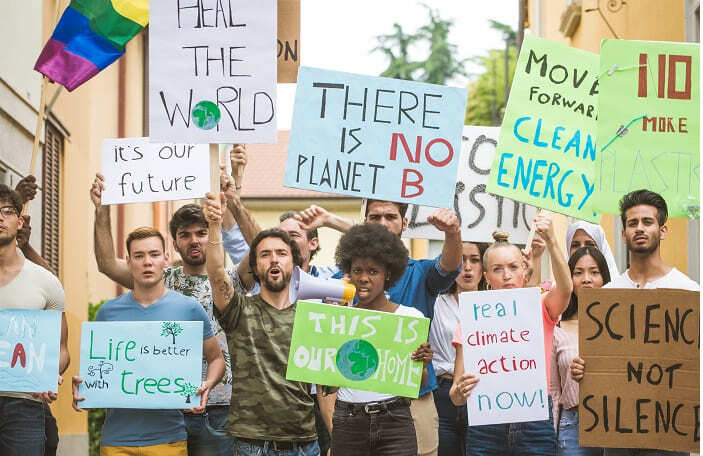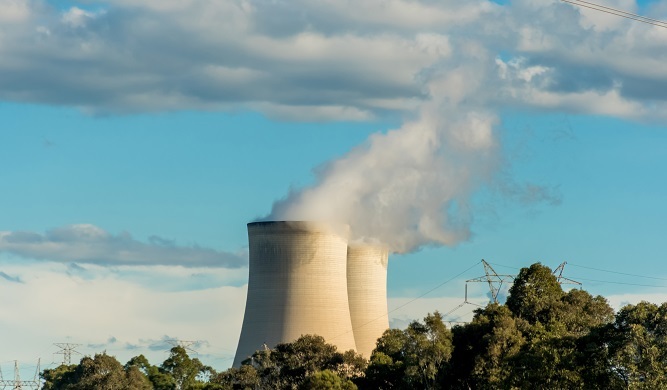
 Data Structure
Data Structure Networking
Networking RDBMS
RDBMS Operating System
Operating System Java
Java MS Excel
MS Excel iOS
iOS HTML
HTML CSS
CSS Android
Android Python
Python C Programming
C Programming C++
C++ C#
C# MongoDB
MongoDB MySQL
MySQL Javascript
Javascript PHP
PHP
- Selected Reading
- UPSC IAS Exams Notes
- Developer's Best Practices
- Questions and Answers
- Effective Resume Writing
- HR Interview Questions
- Computer Glossary
- Who is Who
What is the full form of GWP?
Introduction
Global Warming Potential (GWP) of a greenhouse gas (GHG) is an estimation of how much intensity it can trap in the climate over a specific period in contrast with carbon dioxide (CO2) of a similar mass. With this action, we can look at the warming effects of different ozone-depleting substances on a typical scale.

The radiative forcing (amount of energy the gas absorbs and emits) and atmospheric lifespan of the gas are considered when calculating the GWP. For instance, methane is a more powerful greenhouse gas per molecule than carbon dioxide but has a shorter atmospheric lifespan.
Definition of GWP
The global warming potential (GWP) is a boundary used to look at the warming effect of greenhouse gases (GHGs) to that of carbon dioxide (CO2) throughout a given time horizon. The radiative driving of a GHG is contrasted with the radiative forcing of CO2 during a specific period to decide the global warming potential (GWP).
The distinction between Earth's energy from the sun and the energy reflected once again into space is known as radiative driving. GWP enables this comparison by comparing the warming impacts of various GHGs and considering their atmospheric lives and capacity to trap heat in the Earth's atmosphere.
Factors Affecting GWP
Various factors impact the Global Warming Potential (GWP) of ozone-harming substances. These elements consist of
Atmospheric lifetime A gas's GWP depends on its time in the atmosphere. In contrast with a gas with a more drawn-out environmental life expectancy, like carbon dioxide, a gas with a more limited air lifetime, like methane, will have a more prominent GWP throughout a more limited time horizon.
Radiative forcing Another element that influences a GHG's GWP is its radiative forcing, or the capacity of a GHG to trap heat in the atmosphere. A gas's GWP rises with the strength of its radiative forcing.
Concentration in the atmosphere A GHG's GWP is also impacted by its atmospheric concentration. For example, even though methane has a more grounded radiative force than carbon dioxide, its complete warming impact is more modest than carbon dioxide since it is available in the environment in much lower sums.
Time horizon The duration of the time horizon used to compute the GWP might impact the outcomes. The variable atmospheric lifetimes of various GHGs are considered using different periods. A 20-year or 500-year time horizon might represent various environmental and policy factors, although a 100-year time horizon is often used to compute GWP.
Interactions with other gases The GWP of GHGs in the atmosphere can also be impacted by interactions with other gases. For instance, methane and other GHG interactions might intensify their warming effects, resulting in a larger global warming potential (GWP) than would be predicted based on methane emissions alone.
Applications of GWP
The Global Warming Potential (GWP) is a critical measure used in numerous environmental change-related applications; for example
Environment strategy At the public and worldwide levels, decisions about environmental strategy depend on the GWP. For example, the Paris Arrangement and the Unified Countries System Show on Environmental Change (UNFCCC) use GWP to set objectives for reducing ozone-harming substance discharges.
Carbon footprinting GWP is a tool businesses and organisations use to determine their carbon footprint or the overall amount of GHG emissions produced by their operations. Prioritising efforts to minimise emissions of the most powerful GHGs is made easier by understanding the GWP of various gases.
Life cycle assessment Life cycle assessment (LCA) studies, which measure the environmental effects of items or processes throughout their full life cycle, also employ GWP. LCAs can determine the best methods to lessen a product's or process's environmental impact by determining the GWP of various GHGs.
Emission inventories GWP is used by governments and organisations to create inventories of greenhouse gas emissions. These inventories aid in monitoring emissions through time and the detection of patterns, which may be used to guide the formulation of climate policy and assess the efficacy of mitigation measures.
Carbon pricing Policies for carbon pricing, such as carbon taxes or emissions trading systems, employ GWP to give greenhouse gas emissions a monetary value. Carbon pricing schemes can encourage the reduction of emissions of the most powerful GHGs by pricing emissions according to their GWP.
Examples of GWP Values
Here are some examples of popular greenhouse gas Global Warming Potential (GWP) values using a 100-year time horizon

Carbon dioxide (CO2) 1 (by definition, as the baseline GWP for CO2 is utilised)
Methane (CH4) 28 to 36 (depending on the estimate's source)
HFCs (hydrofluorocarbons) 12-4,800 (depending on the HFC type)
PFCs (perfluorocarbons) 6,500-9,200
Fluoride of sulphur (SF6) 22,800-32,000
Conclusion
The warming effect of greenhouse gases (GHGs) in contrast with carbon dioxide (CO2) is estimated utilising the dangerous atmospheric deviation potential (GWP), a fundamental boundary.
A GHG's GWP is determined by comparing it to CO2's radiative forcing and accounting for variables, including its atmospheric lifespan, concentration, and interactions with other gases. In carbon footprinting, life cycle analysis, emission inventories, and carbon pricing, GWP is frequently employed. Knowing GWP values is essential for selecting the best methods for reducing greenhouse gas emissions and reducing the effects of climate change.
FAQs
Q1. How does the GWP influence climate policy?
Ans: In climate policy, GWP creates goals for cutting greenhouse gas emissions, such as those outlined in the Paris Agreement. Informing policy choices on carbon pricing and emissions trading schemes is another use.
Q2. Why is the time-related horizon significant for determining GWP?
Ans: Various gases have variable atmospheric lifetimes, which allude to how long they stay in the air. The period a gas's warming impact is considered is known as the time horizon and is utilised in GWP estimates. For instance, a time horizon of 100 years is typical, although other lengths might be employed to represent various environmental and policy factors.
Q3. How can GWP be diminished?
Ans: By lowering emissions of the strongest greenhouse gases, including methane and fluorinated gases, GWP can be decreased. This might be finished in various ways, including developing energy effectiveness, going to sustainable power sources, and setting up discharge control gadgets.

